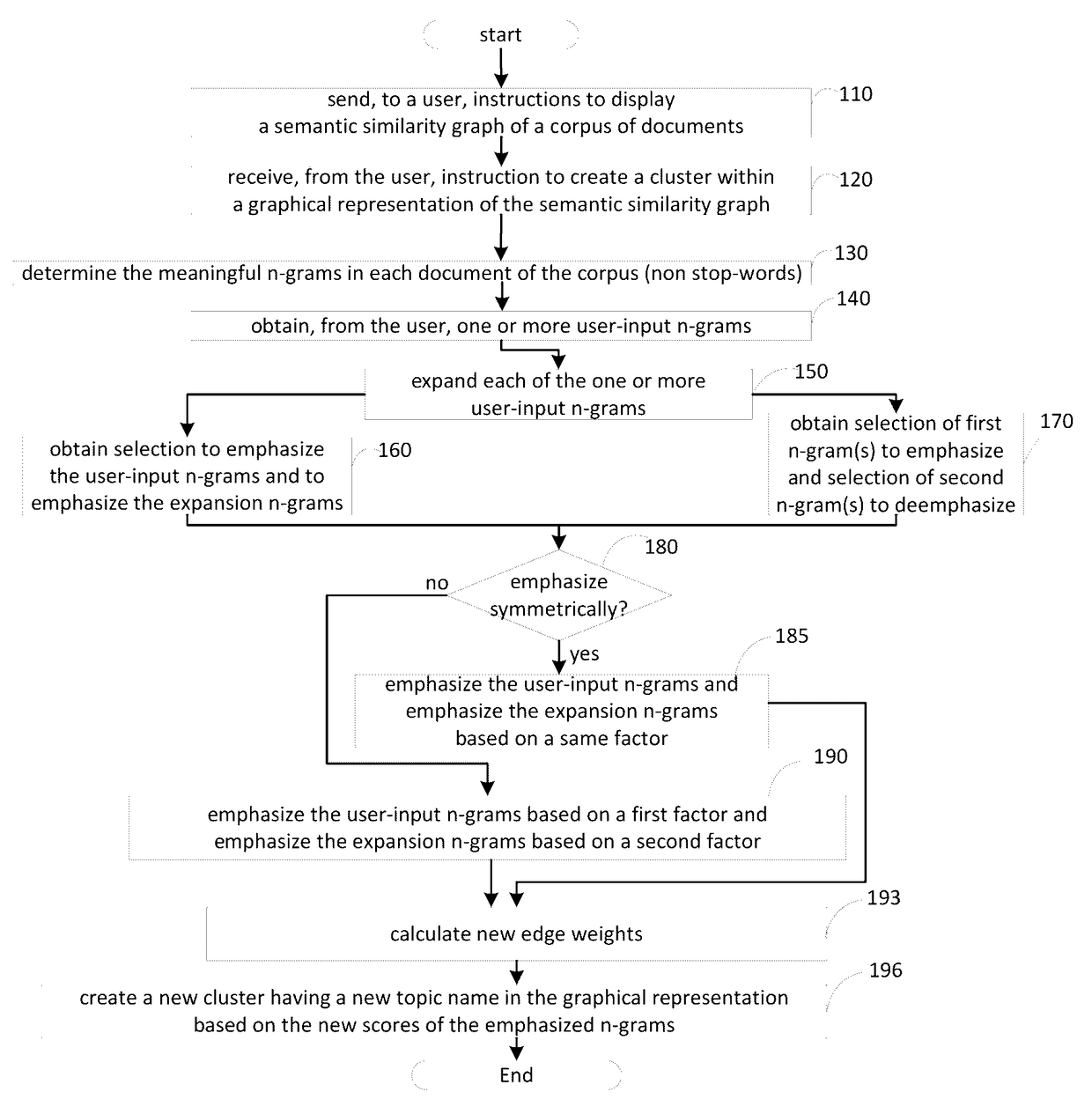Adjustment of document relationship graphs
a graph and relationship technology, applied in the field of computational linguistics, can solve problems such as the inability to make inferences that would otherwise be impractical, the inability to edit semantic similarity graphs (and other document relationship graphs) and the inability to provide clustering, and the inability to adjust graphs without clusters
- Summary
- Abstract
- Description
- Claims
- Application Information
AI Technical Summary
Benefits of technology
Problems solved by technology
Method used
Image
Examples
embodiment 1
2. The method of embodiment 1, wherein selecting expansion n-grams based on the candidate n-gram scores comprises: ranking the candidate n-grams by the candidate n-gram scores; and selecting candidate n-grams in response to determining that the selected candidate n-grams satisfy a threshold ranking.
3. The method of any of embodiments 1-2, wherein determining an amount of times each candidate n-gram occurs in the first set of documents to form a first amount is performed before selecting a set of candidate n-grams from the first set of documents.
4. The method of any of embodiments 1-2, wherein determining, for each of the candidate n-grams, a candidate n-gram score based on the first amount and the second amount comprises: determining a candidate n-gram score proportionate to the ratio of the first amount to the second amount.
5. The method of any of embodiments 1-4, wherein determining, for each of the candidate n-grams, a candidate n-gram score based on the first amount and the seco...
embodiment 7
8. The method of embodiment 7, wherein the count of a number of n-grams in the first set of documents is a count of a number of n-grams of the same number of terms as and corresponding candidate n-gram.
9. The method of any of embodiments 1-8, wherein the second amount is a frequency based on a measure of central tendency of a number of n-grams in each of the second set of documents.
10. The method of any of embodiments 1-9, wherein determining the candidate n-gram score based on the first amount and the second amount comprises performing steps for determining the candidate n-gram score.
11. The method of any of embodiments 1-10, wherein adjusting edge weights comprises: obtaining a feature vector representation of each document, each feature vector indicating an amount of occurrences of respective n-grams in the respective document with respective cardinal values; and for each of at least some of the feature vectors, selecting cardinal values of the respective feature vector correspon...
embodiment 11
12. The method of embodiment 11, wherein adjusting the selected numerical cardinal values comprises steps for adjusting the selected cardinal values.
13. The method of embodiment 11, wherein adjusting edge weights comprises: determining document pair-wise similarity based on angles between adjusted feature vectors.
14. The method of embodiment 11, wherein adjusting edge weights comprises: steps for determining similarity of feature vectors.
15. The method of any of embodiments 1-14, wherein the obtained graph is a semantic similarity graph comprising vectors as nodes and edges with weights, the vectors being generated by: generating, for each document of the corpus, a list of all the unique document n-grams occurring in the document; counting, for each document of the corpus, the number of times each unique document n-gram occurs in the document and the number of times each unique document n-gram occurs in each of the other documents of the corpus to form a third count and a fourth cou...
PUM
 Login to View More
Login to View More Abstract
Description
Claims
Application Information
 Login to View More
Login to View More - R&D
- Intellectual Property
- Life Sciences
- Materials
- Tech Scout
- Unparalleled Data Quality
- Higher Quality Content
- 60% Fewer Hallucinations
Browse by: Latest US Patents, China's latest patents, Technical Efficacy Thesaurus, Application Domain, Technology Topic, Popular Technical Reports.
© 2025 PatSnap. All rights reserved.Legal|Privacy policy|Modern Slavery Act Transparency Statement|Sitemap|About US| Contact US: help@patsnap.com



